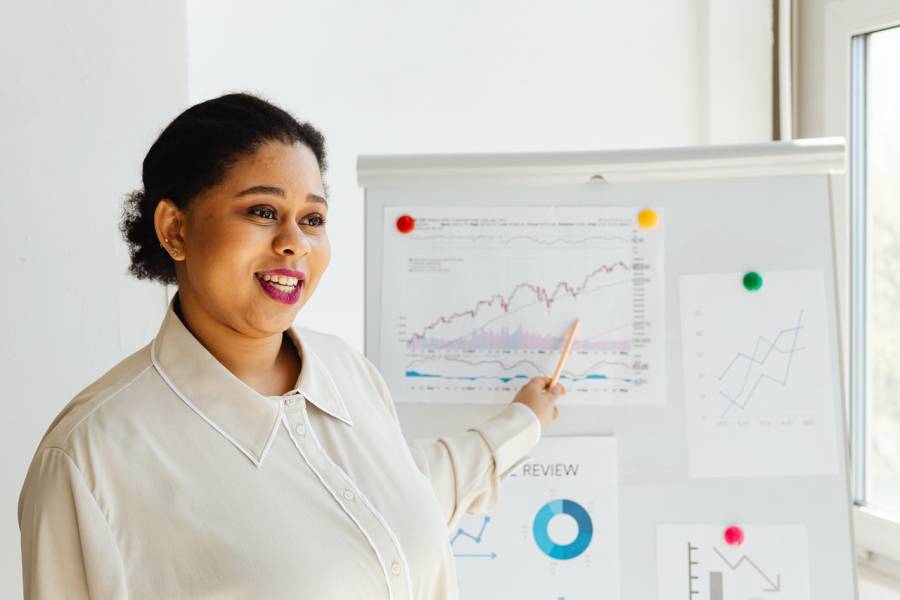Most people think that investment gurus can tell which stocks will pick up in the coming days and weeks. In reality, most experts find it hard to predict how stocks will perform and are prone to giving bad advice. Before choosing whether to buy stocks, backtesting investment ideas is an excellent way to discern good advice from bad. If you are investing despite the high market volatility, backtesting is your best resort to navigate the existing crises.
The Current Investing Climate is Volatile
Trading stocks on a short time horizon, especially planning on recouping on investment at the end of the week, is becoming increasingly difficult for many investors. As a result, January 2022 is being described as the weakest January since January 2009 by many, including The Financial Times.
The S&P 500 index fell by 5.3%, and the tech-heavy Nasdaq Composite index fell by 9%. Both have suffered from their worst one-month decline since the onset of the COVID-19 pandemic in March 2020.
In 2021, the S&P 500 index ended with a 26.9% gain, while the average growth over time revolves around 10%. A recent Investing.com survey shows that first-time investors are younger (63% from Generation X, Y, and Z compared to 45% of other investors). Young investors were more likely to trade for short-term gain (37%) compared to others (21%), and new investors were overall fewer to report profits on their investments (67%) compared to experienced investors (87%).
According to the survey, 86% of the new investors planned to put even more money in stocks in 2022.
Should Investors Buy the Dip?
Many investors wonder if they should buy the dip when facing volatility for the first time.
Goldman Sachs strategists have advised investors to buy the dip. However, many remain skeptical since the Federal Reserve has indicated its intention to raise interest rates in March to control inflation.
Backtesting systems should be equipped with volatility filters to indicate whether or not to enter the market. This will help investors know when it’s time to buy. But, before we talk about backtesting, let’s ask and answer another vital question: What are the sources of stock information that the new investors can trust to catch up with the experienced ones?
What Information Can Investors Trust During Times of Volatility?
The Investing.com survey reveals that both experienced investors and first-time investors analyze stocks based on fundamental values reported by the media. These include revenue, valuation, and industry trends. This strategy, however, applies best when investing in long-term capital accumulation.
People engaged in short-term investing generally use charting as a tool in selecting entry and exit points for stock trades. The truth about technical charting is that the capacity to identify the right timing for buying or selling stocks depends too much on the people’s skills running analyses. Charting offers considerable and valuable insights into market behavior. However, it is also subordinated to too many market conditions that do not necessarily exist in the present.
Remember, only a few of the tips found online are reliable.
An investor must access and assess the most reliable sources of stock information if they want to put themselves in a solid position to succeed. Information becomes crucial within a short time frame.
It can be complicated to determine if a stock is quoted at a fair value. An answer to this problem is backtesting. While it won’t give you an explanation about the value of a stock, it will provide you with a much better idea about its way to move and react to market conditions.
Backtesting Provides the Opportunity to Seize Momentum
Many wonder whether they should buy the dip or wait for more stable conditions to trade. Backtesting provides a scientific method to eliminate doubts when picking stocks. It assesses the viability of a trading strategy by simulating historical data to analyze risks. It can be beneficial at the entry-level, especially when building customized portfolios incorporating specific rules and assumptions.
Trading ideas can be backtested if they are quantified. But how do you proceed with backtesting, given the current market volatility?
Here are the steps to take to backtest a trading strategy:
- First, identify three investment ideas that show momentum in their profits in the most recent period. The investment idea can be backtested after meeting this criterion. We backtest to identify the best parameters to use when determining risks in terms of percentage of profits and losses over short and long periods.
- To backtest, certain conditions must be met. This includes twelve years of history for commodities and a more extended period for currencies. You’ll need as much history as possible for indexes to incorporate bearish, bullish as well as violent, and choppy market crashes.
- Monitor the backtesting results. Remember that trend-following features are getting weaker by the year on many types of stocks, including the commodities markets.
Historical data should cover all phases over an extended period, encompassing bullish, bearish, and choppy phases as well as wild crashes. It will help you discern the good advice from the bad and give you a better idea of when to enter the market and stop trading. Backtesting remains one of the most critical steps in developing a successful trading system.
Image Credit: Karolina Grabowska; Pexels; Thanks


















